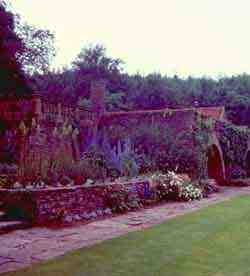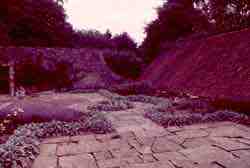Another remarkable aspect of the restoration was that so much work was carried out on the slimmest of budgets.
The money available never rising much above the £750 per year originally authorised by the Fire and Civil Protection Committee, and in some years being less than this.
In 1974 the council was having considerable financial problems and looking to make savings wherever they could.
Leslie Johnson recalls attending a meeting of the Finance Sub-Committee to discuss budget cuts the morning after a severe fire at a factory in Bridgwater had put his men at risk due to the shortage of breathing apparatus.
He remembers his ‘anger in not being able to finance the equipment I knew to be essential for the safety of my firemen, and yet I was there discussing, amongst other items, the financing of garden improvements.'
The county architect Bernard Adams was asked to help, and work went forward with money from both departments. Responsibility for the work subsequently passed in 1974 to the Public Protection Committee under the chairmanship of G.L.Yeabsley, but funding remained severely restricted, and Lorna and her colleagues had to fight in a very tough climate to maintain funding for the project.
The county architect Bernard Adams was asked to help, and work went forward with money from both departments. Responsibility for the work subsequently passed in 1974 to the Public Protection Committee under the chairmanship of G.L.Yeabsley, but funding remained severely restricted, and Lorna and her colleagues had to fight in a very tough climate to maintain funding for the project.

The Orangery Lawn leading to
the Dutch Garden, 1979.
John Ford, who replaced Bil as principal landscape architect, recalls an on-going struggle for money during his time on the working group in the mid-1970s, and having to tread very carefully in order to be able to continue with the work.
In the prevailing funding climate, he says, ‘garden restoration was off the Richter scale!'
Some of the time spent on Hestercombe could be funded by manipulating other, larger budgets: ‘We had to complete timesheets every week and we had budget allocations for the different departments. The time that we were supposed to spend on Hestercombe was very small, so we used to try and hide our work on that under the rather larger budget for "advice to the education department"!' admits Lorna with a smile.
Overall much of what was done was a labour of love, relying on the personal commitment, ingenuity and good will of those involved, with people working in their own time and fitting it around other commitments.

The Dutch Garden during
restoration in 1977.
